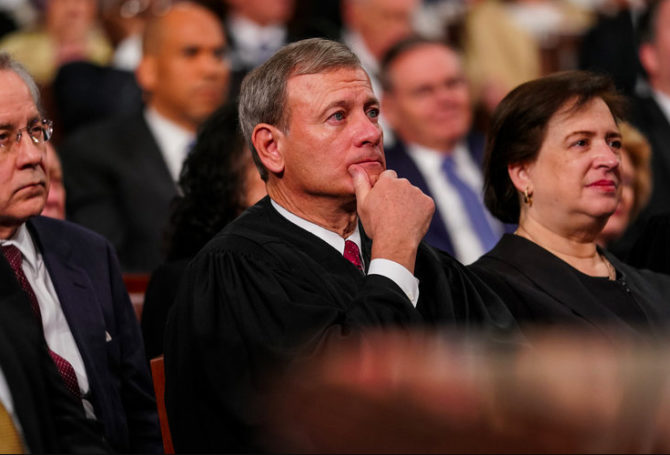
Congress may be deadlocked, but the conservative slant of the US Supreme Court is undeniable with a distinctly conservative chief justice and four ready followers.
Yet, Chief Justice John Roberts, only the 17th chief justice in the history of the country, remains an enigmatic, even secretive figure who broke the hearts of conservatives in 2016 by confirming Obamacare was constitutional. Now, the court he oversees will be faced with deciding seminally partisan cases involving political gerrymandering that could test his ideological leanings. Oral arguments in the cases were made on Tuesday.
The cases involve extreme gerrymandering by Republicans in North Carolina and Democrats in Maryland that good-government advocates are opposing, with electoral results in the pivotal 2020 election in the balance. Both cases, experts say, will test Roberts to see if he is more ideologue than institutionalist.
Without a lot of fanfare, Roberts has served as chief justice for 16 years. At just 64, he could serve for in his role for another 20 years.
Coincidentally, a biography of Roberts has just been published that confirms advocates from both the political left and right are wary of him, despite his privileged upbringing and a clearly conservative record on voting rights, affirmative action, campaign contributions, abortion rights and same-sex marriage.
Joan Biskupic, in her biography The Chief: The Life and Turbulent Times of Chief Justice John Roberts, describes him as the son of a steel company executive and product of an upper-class, all-white suburban Catholic prep school education. Roberts then went to Harvard for his undergraduate and law school degrees.
As an attorney, Roberts argued 39 cases before the Supreme Court before his nomination by President George W. Bush to succeed retiring Justice Sandra Day O’Connor. When Chief Justice William Rehnquist died before his confirmation, Bush upgraded Roberts’ nomination to chief justice. In his confirmation hearing, Roberts compared the role of judges to baseball umpires who calls balls and strikes.
Now, the chief justice, who also doubles as the adult-in-the-room swing vote on the court, must decide on a pair of mirror cases that reflect unvarnished political gerrymandering. He also will deal with a case involving the citizenship question on the 2020 US Census, which also pits GOP ideology against a clear violation of the federal Administrative Procedure Act.
Biskupic thinks these cases could expose a side of Roberts often overlooked – his eagerness to avoid civil division. Citing Roberts’ vote in the Obamacare ruling, she says: “Viewed only through a judicial lens, [Roberts’] moves were not consistent, and his legal arguments were not entirely coherent. But he brought people and their different interests together. His moves may have been good for the country at a time of division and a real crisis in health care, even as they engendered, in the years since, anger, confusion and distrust.”
Roberts has shown a willingness to cross swords with his conservative soul mates, such as when he admonished President Trump for trashing a federal court judge. However, conservatives will expect Roberts to stay at his ideological home on seminal cases involving raw politics. The question is whether Roberts will stick to his ideological roots or, in cases involving partisan issues, perform like his proverbial umpire calling balls and strikes.



